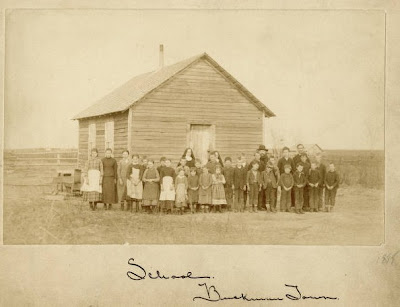This morning, there was an explaination of WHY so many people left Europe after 1840 (exactly when our Jansons left):
In today's excerpt - beginning in 1840, the largest human migration in history
brought over 30 million immigrants to America, and by the time this migration
was interrupted in 1914 by World War I, America stood as the most prosperous
nation on earth:"The reasons for the largest human migration in history had been
long in coming."
One of the main factors was the enormous increase in
the European population that took place in less than a century - from 140
million people in 1750 to 250 million in the 1840s. As the numbers
increased, peasant families were constricted into increasingly smaller plots of
land by powerful landlords who were anxious to reap profits by creating larger
farms to feed the growing cities. Soon alarming numbers of peasants found
themselves unable to subsist.
They were joined in their plight by legions of artisans whose special skills - passed on from father to son and mother to daughter for generations - had earned them both a livelihood and a respected place in society. Now, however, scores of the goods they had so expertly handcrafted were being produced by the machinery of the Industrial Revolution. Thousands of' these artisans found themselves out of work, forced to move to the cities and work in factories, where low wages, drudgery, and the loss of their personal independence resulted in a sadly diminished quality of life. [Joseph Janson was a weaver, and John was a 'schreiner', or cabinetmaker].
"Devastating as they were, none of these problems compared to the series of famines that, beginning in the 1840s, descended upon various European nations. Nowhere was the situation more desperate than in Ireland where, in 1845, a fungus destroyed the potato crop, the single food staple upon which the poorer classes of the country depended for survival. By the time the disease began to abate in 1849, more than a million Irish men, women, and children had starved to death. ...
"It was not only in Ireland that famine struck. ... A quote from the archives of the Iowa State Historical Society by a Polish youngster put it more personally: 'We lived
through a famine,' he explained, '[so] we came to America. Mother said she
wanted to see a loaf of bread on the table and then she was ready to die.'
"There were other important reasons for the mass exodus as well. Despite
the notions of liberty and equality that both the American and French
revolutions had spawned, oppressive governments in countries such as Russia,
Germany and Turkey had denied freedom of religion, freedom of speech, or other
rights and had brutally put down rebellions aimed at bringing about reform.
In Russia and Poland, massacres called pogroms erupted. Designed to
eliminate minority groups who lived within their borders - particularly Jews -
some of these pogroms were carried out by the governments of these two
countries; others were unofficially endorsed by them....
"They came in waves; ... more than five million of them arrived between 1840 and 1880, an influx slightly greater than the entire population of the United States in 1790. Most emigrated from northern and western Europe - Scandinavians who settled in the American Midwest; Germans who established enclaves in New York, Baltimore, Cincinnati, St. Louis, and Milwaukee; and British and Irish who poured into Boston, New York, and other northeastern communities.
"Beginning in 1880 a great shift occurred when an even larger flood of newcomers came from eastern, central, and southern Europe - Russians, Poles, Austro-Hungarians, Greeks, Ukrainians, and Italians.
In 1880 less than twenty percent of the 250,000 Jews living in New York had come from Eastern Europe. In the next forty years the number grew to 1,400,000. That was one-fourth of the city's entire population.
In the first quarter of the 1900s, more than two million Italians arrived. By the time the human tide was interrupted in 1914 by World War I, some thirty-three million people had fled their native lands, risking all to start life anew across the ocean.
"Martin W. Sandler, Atlantic Ocean,
Sterling, Copyright 2008 by Martin W. Sandler, pp. 356-364.

































